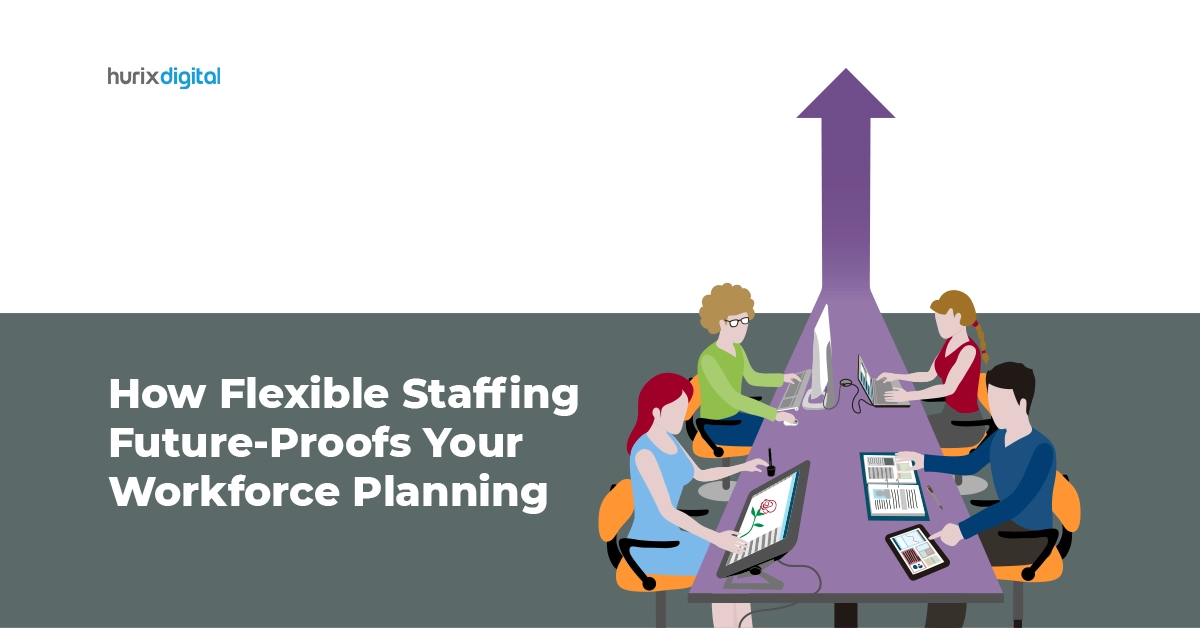A New Approach for the Emerging Hybrid Workforce
Two years have passed since the pandemic pushed us inside our homes. Offices around the world shifted to remote work to account for the months of lockdown.
Now, things are getting back to normal and many organizations are asking employees to join the office. However, not everyone wants to go back to constricted cubicles or travel for an hour to reach work.
Many still want to work remotely and maybe attend the office one or two days a week. That is giving rise to a hybrid workforce that will change how we work.
Naturally, such a change in working patterns is bound to bring in challenges. CEOs and managers would need to adapt and think out of the box to maintain productivity.
Let’s explore how you can make that possible.
What is a Hybrid Workforce?
Remote work became a norm across industries during the lockdown. At that time, nobody thought we would be attending to our duties from home for such a long time.
As a result, employees became used to sending emails and coding from home.
However, now the time has come to return to the office. Yet, not all employees or employers want work to happen in a brick-and-mortar office.
Over 50% of private and government employees would prefer to work remotely for 3 or more days in a week. Additionally, 52% of employees want a more flexible working model, according to McKinsey.
Therefore, it is evident that we are experiencing a disruption in how we work. Employers will now have to adapt and be flexible if they still want to attract top talents.
So, we are likely to see hybrid working models coming up that blend remote and in-office work. Such working models are going to become more common as that’s what employees expect.
The population of employees working under a hybrid working model is a hybrid workforce. They work from home for the majority of the days and attend the office only to collaborate or brainstorm.
The Emergence of a Hybrid Workforce
How we work is changing fast. Employees are demanding more flexible working models and employers are looking to accommodate their demands.
Most of them are happy, as flexible working boosts productivity and employee satisfaction. It also saves them significant overheads that bring down the cost.
As a result, 66% of leaders are thinking of redesigning their workspaces to suit hybrid working models.
Moreover, business leaders are spending on technology to make sure distance doesn’t become a barrier. They are also going over the foreseeable challenges that come in the way of implementing a hybrid working model.
In addition, they are considering the hiccups that they might experience to accommodate a hybrid workforce.
The situation needs a complete change of approach and thinking from scratch. You need to evaluate what you learned from remote working and how to blend it with in-office work.
The process and steps will vary based on businesses and industries. However, you can still make an effort to ensure you can provide a smooth journey for your hybrid workers.
We will explore how you may change your approach and welcome a hybrid workforce with open arms.
The Right Approach to Make Hybrid Employees Work Productively
A well-thought approach and right planning can go a long way to make your hybrid workforce excel. The first step is to take a hard look at how your employees worked and what’s changed after the pandemic.
This approach will give you vital clues to form meaningful insights to make informed decisions. You can then take the steps below to improve the outcomes:
Bring a Change in Leadership Mindset
Not every employer is comfortable with remote working. They fear losing control and productivity as employees don’t work inside the office. Additionally, they worry working from home won’t be feasible in the long run.
However, that is a mindset issue, says George Penn, vice president, advisory, Gartner (HR). He feels leaders should really dig into research and numbers to understand how hybrid work enhances engagement.
Moreover, he suggests business leaders focus on outcomes. Worrying about time spent is not the right way to make the most of a hybrid workforce.
Instead, you need to set your goals and connect with your employees.
Additionally, companies should try to foster a culture where hybrid work is welcomed. It is necessary to go beyond hours worked and look at the productivity of hybrid work to understand its benefits.
Penn says organizations that are aligned with the labor market will emerge as leaders. Companies that excel at talent management should also find the change easy.
Form Emotional Connections
Working from home for extended periods can bring down motivation and productivity temporarily. Employees might not be able to form meaningful connections with their managers or supervisors.
As a result, they might not be able to fulfill their objectives, which, in turn, would hamper business performance.
For this reason, employers should inspire and form meaningful connections with their employees. It is also the reason 40% of CEOs in Canada want to instill a culture based on values and purpose.
Additionally, you should try to establish a common objective that your hybrid workforce can work towards. It also pays to align your organization’s mission with a broader goal that impacts the community.
For example, you can tie your mission to conserving the environment to make your hybrid employees relate. Other examples of broader goals include well-being, social justice, eradicating poverty, and more.
Moreover, you can make your hybrid workforce relate to your customers. This is essential as working remotely may not provide your employees a chance to meet clients.
You can take cues from your marketing team and create customer personas to overcome the challenge. It allows you to create a picture of the ideal customer that you want to target.
Employers can also form meaningful connections through ways like storytelling and face-to-face meetings.
Empower Your Hybrid Workforce
Many companies have already implemented a hybrid working model. They are even recruiting new employees who will be required to work under a flexible model.
While most people are comfortable with working remotely, you can’t take that for granted. There may be a few people who don’t know the ins and outs of working from home.
As a result, it is the employer’s duty to determine if everyone has the skills to perform remotely. The evaluation should start from the recruitment stage and end by the time onboarding is complete.
For existing employees, you should first make an assessment of their skills. You can then identify the areas you need to impart training or improve.
It is necessary that each one of your hybrid employees can work remotely confidently. Therefore, you will also have to provide the right technology and tools to support your hybrid workforce.
The list includes resources like project management tools, messaging apps, collaboration solutions, and more.
Additionally, ensure your employees can access those solutions from anywhere. You should also make sure they have the right infrastructure and set up to excel at work from home.
This step is really important, as hybrid work is challenging. For example, 49% of professionals feel it is easier to collaborate in the office in person. Or, 44% of employees feel working in an office makes it convenient to know what their colleagues are working on.
Technology can work wonders to overcome these issues. If done right, your hybrid teams can perform better than in-office employees in several aspects.
For example, those who work in an office spend 2-fold more time collaborating compared to people working remotely.
Therefore, employers should go an extra step to empower and prepare teams for hybrid work.
Refine Your Workspace to Suit Hybrid Work
The closed design of offices promoting cubicles has become a thing of the past. Even before the pandemic, companies worldwide were giving a second thought to the open plan.
As a result, flexible and activity-based spaces were taking an entry into different industries. The results were also promising for companies, as open office designs boost collaboration and productivity.
No wonder 77% of employees feel they can work more productively in an open workspace.
Therefore, it is in the interest of employers to push for an open office design. Additionally, the need of the hour also calls for such action as employees returning to office want more freedom. They have been used to working from home and expect the same flexibility at the office.
So, meetings will now take place in open spaces with mobile boundaries, as per Harvard Business Review. And consequently, individual responsibilities that need concentration will shift to enclosed spaces, like cubicles.
Companies are also experimenting with creative ideas like pods and enclaves. Some are even providing the freedom and nap pods so that the hybrid workforce can catch a few winks.
Open spaces are favoured by employees as they have the room to breathe. In addition, you don’t have any fixed fixtures and can transform the space to suit varying needs.
As a result, they also suit teams and organizations that follow an agile approach to work.
However, employers also need to consider the nuances of closed spaces for individual work. They may need varying degrees of privacy and isolation based on the task.
So, plan well and create a hybrid work-friendly office layout for the best results.
The Other Side of the Picture
Not all employees or roles may want or benefit from an open office plan. Some employees who worked alongside their colleagues now want a private space. They are now comfortable with working in their rooms where they don’t face any distractions.
As a result, 47% of US employees would like to work in a private environment.
Therefore, employers will need to gather feedback from their employees on what they prefer. However, this might become less of a problem if your hybrid workforce performs tasks that need focus from home.
In such cases, you may adopt the open design for your teams to meet and conduct stand-ups. They can also come together to solve problems, innovate, and share new ideas.
Ensure Optimum Communication
Remote working brings in the concern of loss of communication. Asynchronous conversations also make collaborating difficult and hamper your progress.
In addition, online communication may miss out on emotional connections.
Therefore, employers should go an extra step to ensure their hybrid workforce can communicate seamlessly. You need to provide them with the right communication tools to stay in touch and be on the same page with colleagues.
There are several options available in the market like Slack or Discord. You can choose a tool based on your needs and even experiment with free ones.
Moreover, you should encourage interactions and create opportunities for hybrid teams to communicate. You can try several ways, like mandating a stand-up before the day starts where hybrid employees share their updates.
However, don’t waste time with unnecessary or long meetings. It eats up not just precious hours of your workers but also adds to your costs.
As a result, 71% of managers feel their meetings bring no results. Additionally, inefficient meetings cost businesses $37 billion in losses every year.
Therefore, be judicious in calling meetings and keep them short. For example, daily stand-ups shouldn’t take more than 15 – 30 minutes if you don’t have hundreds of employees.
Final Thoughts
Hybrid work is the future of work. We are not going back to the office full time. Instead, we are looking at flexible working models that blend remote and in-office work. It is the need of the hour and what your employees expect.
So, you need to start considering changing how you work for more flexible options. Start with evaluating your organization and work patterns. Then, you should set objectives and work towards attaining a hybrid work-friendly workspace and working environment.
Technology will also play a big part in making hybrid workers productive. Employers will need to empower their workers with the right tools and resources to be productive. Along with that, there should be a change in mindset where leaders don’t fear implementing a hybrid working model.
To know more about more solutions from HurixDigital, please write to us at marketing@hurix.com, or visit our website Hurix.com











